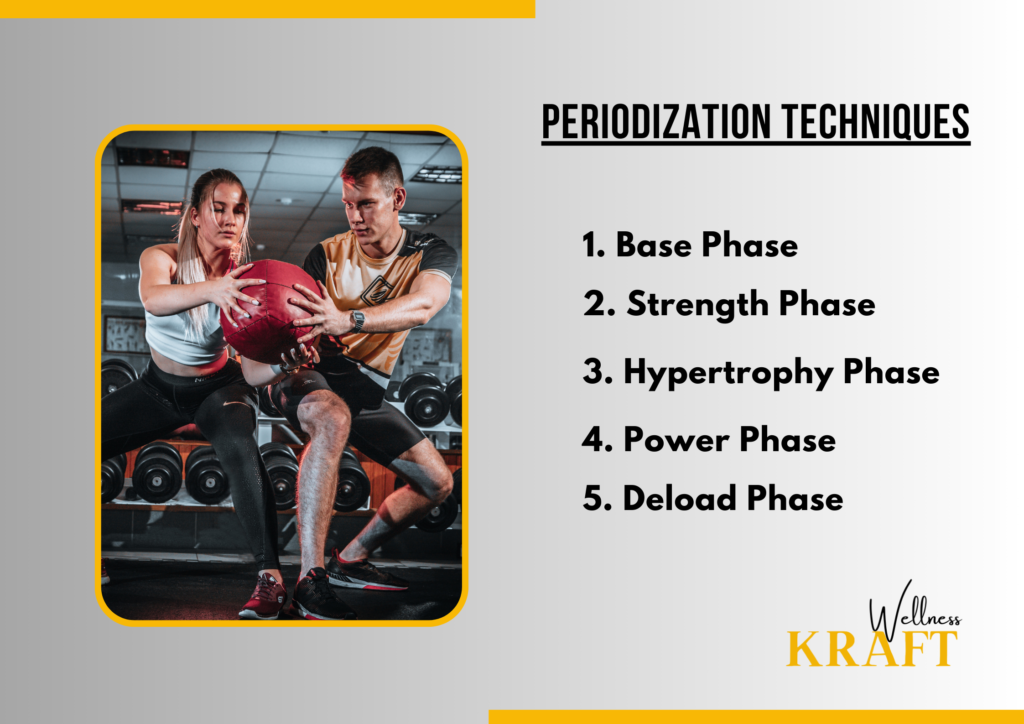Table of Contents
Introduction
A fitness plateau can be a formidable obstacle in your journey towards a healthier and fitter you. You’ve been dedicated, you’ve put in the hard work, but suddenly, it feels like you’ve hit a brick wall, and progress has come to a screeching halt. The good news is that you’re not alone, and breaking through a fitness plateau is entirely achievable with the right training regime.
Understanding the Plateau
Before we dive into the specifics of your training regime, it’s essential to understand why plateaus occur. Your body is an incredibly adaptive machine, and it constantly strives for balance and efficiency. When you embark on a fitness journey, your body reacts by making changes to accommodate the new demands you’re placing on it. This is why you see initial progress.
However, as your body becomes accustomed to your routine, it becomes more efficient at handling the stress you’re imposing. This means that the same workout you found challenging a few months ago is now a walk in the park for your body. Consequently, you need to introduce new challenges and strategies to overcome this adaptive response.
Periodization Techniques

One of the most effective methods for smashing through a fitness plateau is employing periodization techniques. Periodization is a systematic approach to your training, where you vary the intensity and volume of your workouts over a set period. This variation keeps your body guessing and prevents it from adapting too quickly.
Periodization can be divided into different phases, such as:
1. Base Phase
The Base Phase is the foundation of your periodized training regime. During this phase, your primary goal is to establish a base level of strength and endurance. The intensity of your workouts is moderate, and you’ll concentrate on refining your exercise form. This phase is crucial for several reasons:
- Form Perfection: By focusing on perfecting your form, you’ll minimize the risk of injury as you progress to more challenging phases.
- Building Endurance: Moderate-intensity workouts help improve your cardiovascular fitness and build endurance, laying the groundwork for more strenuous phases.
- Mental Preparation: The Base Phase allows you to mentally prepare for the intensity of the subsequent phases. It’s a great time to set clear fitness goals.
2. Strength Phase
In the Strength Phase, your training intensifies as you aim to push your limits and build significant strength. This phase involves lifting heavier weights or performing more demanding bodyweight exercises. Here’s why the Strength Phase is essential:
- Progressive Overload: Increasing the intensity is essential for overcoming plateaus, as it places a greater demand on your muscles and central nervous system.
- Muscle Recruitment: Heavier weights require your body to recruit more muscle fibers, contributing to strength gains.
- Plateau Buster: The Strength Phase is an excellent plateau-breaking strategy, challenging your body with new levels of resistance.
3. Hypertrophy Phase
The Hypertrophy Phase is all about muscle growth. It involves higher repetition ranges and shorter rest periods between sets. This phase stimulates muscle hypertrophy or the increase in muscle size. Here’s why it’s vital:
- Muscle Size: If your goal is to gain muscle mass, this phase is critical. Higher repetitions and shorter rest periods create metabolic stress that encourages muscle growth.
- Aesthetic Changes: Hypertrophy training can lead to aesthetic changes in your physique, making your muscles appear more defined and developed.
- Varied Stimulation: By varying your training, your body continues to adapt, preventing plateaus and promoting muscle development.
4. Power Phase
The Power Phase focuses on developing explosive power and speed. It includes exercises like plyometrics and Olympic lifts. Here’s why the Power Phase is important:
- Functional Strength: Power training enhances functional strength, making you more agile and better at explosive movements.
- Muscle Recruitment: Explosive exercises recruit high-threshold motor units, promoting muscle growth and overall athleticism.
- Plateau Breaker: Power training introduces novel challenges to your body, breaking through plateaus and ensuring continuous progress.
5. Deload Phase
The Deload Phase is a crucial aspect of periodization. In this phase, you deliberately reduce the training load to allow for recovery and prevent overtraining. Here’s why the Deload Phase is valuable:
- Recovery: Deloading allows your body to recover, reducing the risk of injuries, fatigue, and overuse.
- Adaptation: It provides a period of active rest, allowing your body to adapt to the prior phases and prepare for the next phase.
- Injury Prevention: Overtraining can lead to injuries, so the Deload Phase is a critical injury prevention strategy.
Incorporating these phases into your periodized training regime ensures that your body is continuously challenged, preventing plateaus and promoting overall fitness gains. Remember that it’s essential to tailor these phases to your specific fitness goals and individual capacity.
Another potent strategy to overcome plateaus is cross-training. Cross-training involves diversifying your fitness activities. If you’ve been exclusively lifting weights, consider incorporating cardiovascular exercises like running or cycling. If you’re a devoted runner, adding strength training to your routine can be a game-changer.
Cross-training not only introduces novelty into your workouts but also allows different muscle groups to be engaged, preventing overuse injuries and monotony.

Exploring High-Intensity Interval Training (HIIT)
High-Intensity Interval Training (HIIT) is another valuable tool in your arsenal. HIIT involves short bursts of intense exercise followed by brief recovery periods. This method is excellent for both burning fat and breaking through plateaus.
HIIT challenges your cardiovascular system and boosts your metabolism. It’s a fantastic way to shock your body out of its comfort zone and see remarkable progress, even in a short amount of time.
Supplements for Plateau Breakers
Supplements can also aid in overcoming plateaus. Creatine, for example, is known to enhance performance and muscle gain. Branched-chain amino acids (BCAAs) can reduce muscle soreness and improve recovery. Consult with a healthcare professional or nutritionist before adding supplements to your regimen to ensure they align with your goals and health status.
Injury Management
Injuries can be a significant setback when striving to overcome a plateau. It’s crucial to prioritize injury management and prevention. If you’re injured, seek professional medical advice and adhere to their recommendations for rehabilitation. Prevent injuries by maintaining proper form, gradually increasing intensity, and incorporating recovery days into your training regime.
Tracking Progress
To conquer the fitness plateau, data is your friend. Tracking your progress provides insights into what’s working and what isn’t. Use tools like workout journals, fitness apps, or wearable devices to record your workouts, diet, and overall well-being. Analyze this data to make informed adjustments to your training regime and nutrition.
FAQs
1) What causes a fitness plateau?
A fitness plateau occurs when your body adapts to your current routine, making further progress challenging.
2) How long does a plateau typically last?
Plateaus can vary in duration, but they often last from a few weeks to a few months.
3) Is it normal to experience frustration during a plateau?
Yes, it’s normal to feel frustrated, but it’s crucial to stay motivated and focused on your goals.
4) Can changing my workout routine help break a plateau?
Yes, varying your workout routine can be an effective strategy to overcome a fitness plateau.
5) How important is nutrition in overcoming a plateau?
Nutrition plays a significant role. Making dietary adjustments can help you push through fitness plateaus.
6) What are the benefits of cross-training?
Cross-training helps prevent boredom and keeps your body adapting to new challenges.
7) Is it necessary to incorporate high-intensity interval training (HIIT)?
HIIT can be beneficial in breaking through fitness plateaus, but it’s not the only solution.
8) What role does sleep play in overcoming a plateau?
Quality sleep is vital for recovery and breaking through fitness plateaus.
9) How can I stay motivated during a fitness plateau?
Setting realistic goals and visualizing your progress can help maintain motivation.
10) Are supplements a safe option to break through a plateau?
Some supplements can be safe and effective, but consulting with a nutritionist is advisable.
Key Takeaways
- Fitness plateaus are common but can be overcome with the right strategies.
- Understanding the science behind plateaus and how the body adapts is essential.
- Periodization, which involves varying your training intensity and volume, is a powerful technique to prevent plateaus.
- Cross-training diversifies your workouts and engages different muscle groups, preventing overuse injuries.
- High-Intensity Interval Training (HIIT) can shock your body out of its comfort zone and lead to remarkable progress.
- Supplements like creatine and BCAAs can aid in breaking plateaus, but consult a healthcare professional before use.
- Prioritize injury management and prevention by maintaining proper form and gradually increasing intensity.
- Tracking your progress with data is essential for making informed adjustments to your training regime.
- Stay motivated by setting realistic goals, visualizing progress, and seeking support from the fitness community.
- Plateaus are a natural part of the fitness journey, and with patience, persistence, and the right approach, you can conquer them and achieve your fitness goals.
Concluding Thoughts
In conclusion, your training regime is the key to conquering the fitness plateau. Understanding why fitness plateaus occur, incorporating periodization techniques, embracing cross-training, and exploring HIIT can reinvigorate your fitness journey. Remember, breaking through a fitness plateau is not about working harder; it’s about working smarter and introducing the right kind of variation into your routine. With these strategies in place, you’re well on your way to reaching new heights in your fitness goals.










2 comments
I’m not sure what Area 52 has to do with any of this?
I don’t even know the way I finished up right here, however I thought
this post used to be great. I don’t recognise who you are however definitely you are going to a famous blogger should you are not already.
Cheers!